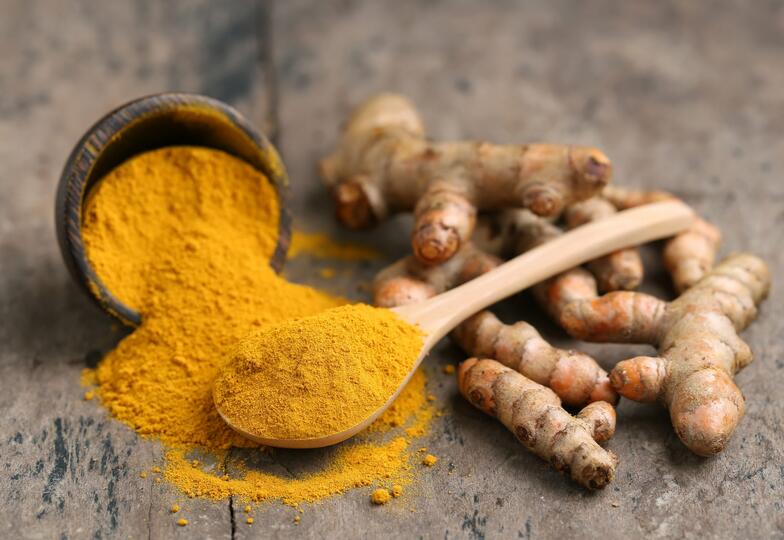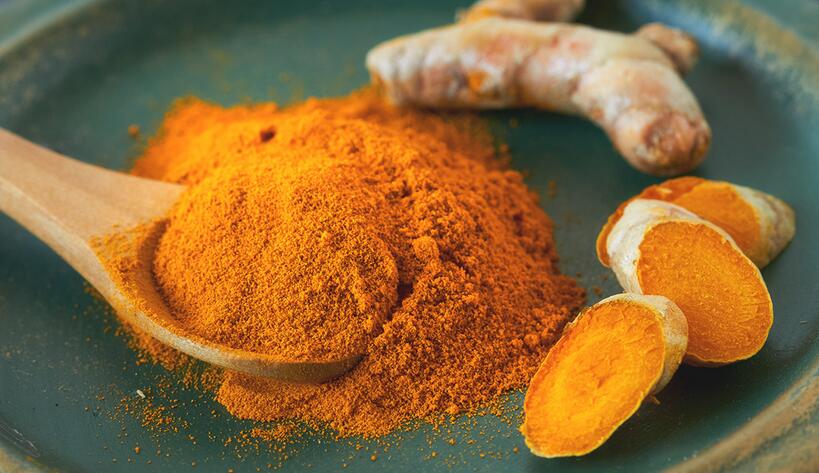Turmeric is a vibrant yellow spice commonly found in Asian cuisine. It has been cherished for centuries for its medicinal properties. In recent years, it has gained popularity as a natural remedy for pain relief. This article will delve into the science behind turmeric for pain relief and explore how you can incorporate it into your daily routine.
What is Turmeric?
Turmeric, derived from the Curcuma longa plant, is a member of the ginger family. It has been used in traditional medicine systems like Ayurveda and traditional Chinese medicine for its anti-inflammatory and antioxidant properties. The active compounds in turmeric responsible for its therapeutic effects are collectively known as curcuminoids.
Curcumin, the main active compound in turmeric, has been extensively researched for its potential health benefits. It possesses powerful antioxidant and anti-inflammatory properties. This makes it a valuable natural remedy for various health conditions, including pain relief.

How Does Turmeric Aid in Pain Relief?
1. Anti-Inflammatory Properties
One of the key ways turmeric helps with pain relief is through its potent anti-inflammatory properties. Inflammation is a natural response of the body to injury or infection. However, prolonged inflammation can contribute to chronic pain conditions such as arthritis.
In addition, Curcumin has been shown to interfere with the activity of nuclear factor-kappa B (NF-kB), a protein complex involved in regulating the expression of numerous genes related to inflammation.
By inhibiting NF-kB, curcumin helps suppress the production of inflammatory cytokines and enzymes, including tumor necrosis factor-alpha (TNF-α), interleukin-1 beta (IL-1β), and cyclooxygenase-2 (COX-2). This anti-inflammatory action contributes to the relief of pain associated with inflammatory conditions.
2. Modulation of Pain Pathways
Curcumin has also been shown to interact with various pain pathways in the body. This can further help contribute to its pain-relieving effects. It acts on different neurotransmitters and receptors that can transmit signals from the site of pain to the brain.
For example, curcumin can bind to and activate the transient receptor potential vanilloid 1 (TRPV1) receptor. By activating this receptor, curcumin can help alleviate pain signals.
Additionally, curcumin has been shown to interact with opioid receptors, which are involved in pain modulation. This interaction may contribute to curcumin’s analgesic properties.
3. Inhibition of Pain Mediators
In addition to its anti-inflammatory and modulation of pain pathways, curcumin has been found to inhibit the production of pain mediators.
Prostaglandins are lipid compounds involved in pain, inflammation, and fever. Curcumin can inhibit the enzyme cyclooxygenase (COX). By reducing prostaglandin levels, curcumin helps alleviate pain and inflammation.
Scientific Evidence of Turmeric for Pain Relief
Numerous scientific studies have investigated the efficacy of turmeric and curcumin in pain relief.
A systematic review and meta-analysis published in the Journal of Medicinal Food evaluating the effects of curcumin on pain in various conditions. The review found that curcumin supplementation significantly reduced pain intensity compared to placebo in conditions such as arthritis, musculoskeletal pain, and postoperative pain.
Another study investigated the effects of curcumin supplementation on patients with knee osteoarthritis. The results showed a significant reduction in pain and improved physical function.
While these studies provide insights into the potential pain-relieving effects of turmeric and curcumin, it’s important to note that individual responses may vary. Factors such as dosage, duration of use, and the specific pain condition can influence the outcomes.
Types of Pain Turmeric Can Relieve
While more research is needed to fully understand the extent of turmeric’s pain-relieving effects, existing studies suggest its potential benefits for the following types of pain:
1. Arthritis
Arthritis is a condition characterized by inflammation and joint pain. This condition is one of the most common conditions for which turmeric is used as a natural remedy.
Both osteoarthritis and rheumatoid arthritis involve chronic inflammation, which can contribute to joint pain and stiffness. The anti-inflammatory properties of turmeric, specifically curcumin, may help reduce inflammation and alleviate arthritis-related pain.
Studies found that turmeric supplementation can lead to improvements in pain scores and physical function in individuals with arthritis.
2. Joint Pain
Turmeric may also be beneficial in relieving general joint pain, regardless of whether it is related to arthritis or other conditions.
Joint pain can be caused by various factors, including inflammation, injury, or overuse. The anti-inflammatory and analgesic properties of turmeric can help reduce pain and swelling in the joints.
Regular consumption of turmeric, whether as a supplement or by incorporating it into your diet, may help alleviate joint pain and improve mobility.
3. Muscle Soreness
For individuals experiencing muscle soreness due to exercise, injury, or overexertion, turmeric may offer relief. Muscle soreness often results from inflammation and micro-tears in the muscle fibers.
Turmeric’s anti-inflammatory properties can help reduce inflammation and promote muscle recovery. Additionally, turmeric’s analgesic properties may help alleviate the pain associated with muscle soreness.
4. Headaches and Migraines
While headaches and migraines have multiple causes, inflammation and oxidative stress are thought to contribute to their onset and severity.
Turmeric’s anti-inflammatory and antioxidant properties may help reduce headache and migraine symptoms. Some individuals have reported finding relief from headaches or migraines by incorporating turmeric into their diet.
5. Menstrual Pain
Menstrual pain, also known as dysmenorrhea, can cause significant discomfort and cramping for many women. Turmeric’s anti-inflammatory and analgesic properties may help reduce the intensity and duration of menstrual pain. Studies found that curcumin supplementation can lead to improvements in menstrual pain scores.

Turmeric Dosage: How Much Should You Take Per Day
The appropriate dosage of turmeric or curcumin may vary depending on factors such as the severity of pain, individual response, and the specific formulation or product used.
For turmeric powder or fresh turmeric root, a general guideline is to consume 1 to 3 grams (approximately ½ to 1 teaspoon) per day. This can be divided into multiple doses throughout the day.
Keep in mind that the curcumin content in turmeric powder is relatively low, ranging from 2% to 5%. Therefore, higher doses may be required to achieve therapeutic effects.
Curcumin supplements, available in pill or capsule form, often provide a higher concentration of curcumin. Dosages typically range from 500 to 1,000 milligrams per day. These supplements may also contain black pepper extract or piperine, which enhances the absorption of curcumin in the body.
How to Use Turmeric for Pain Relief
Here are some ways to use turmeric for pain relief:
1. Turmeric Supplements
Turmeric supplements are available in pill or capsule form, providing a concentrated dose of curcumin, the active compound in turmeric. Follow the recommended dosage instructions provided on the product label or consult with a healthcare professional.
Look for supplements that contain black pepper extract or piperine, as these compounds enhance the absorption of curcumin in the body. Black pepper extract and piperine inhibit the enzymes responsible for breaking down curcumin, allowing for better bioavailability and maximizing its potential benefits.
2. Turmeric Powder
Turmeric powder, derived from ground dried turmeric root, can be added to various dishes to enhance their flavor and provide potential pain-relieving benefits. Incorporate it into curries, stir-fries, soups, or stews.
To increase the absorption of curcumin,you can combine turmeric powder with a source of healthy fat, such as coconut oil, olive oil, or ghee. Heating turmeric with oil or fat can enhance its bioavailability, ensuring that your body can effectively utilize its active compounds.
3. Fresh Turmeric Root
Fresh turmeric root, which resembles ginger in appearance, can be grated or sliced and added to smoothies, juices, salads, or other dishes.
When using fresh turmeric root, keep in mind that its flavor can be more intense than turmeric powder, so adjust the quantity to suit your taste preferences. Start with a small amount and gradually increase as desired.
4. Golden Milk
Golden milk, a traditional Ayurvedic beverage, combines turmeric with warm milk and other spices for a soothing and pain-relieving drink. Mix 1 teaspoon of turmeric powder, a pinch of black pepper, and a cup of warm milk. Add a natural sweetener like honey or maple syrup to taste. You can also add other spices like ginger, cinnamon, or cardamom for additional flavor and potential health benefits.
5. Turmeric Paste
Turmeric paste can be used topically to relieve localized pain and inflammation, such as joint pain or muscle soreness. Mix turmeric powder with water to form a thick paste.
Apply the paste to the affected area, leave it on for 15-20 minutes, and then rinse off. The anti-inflammatory properties of turmeric can help reduce swelling and alleviate pain in the applied area.
Note that turmeric can stain clothing and surfaces, so be cautious during application and consider using an old towel or cloth to protect your surroundings.
6. Turmeric Tea
Enjoy a warm cup of turmeric tea by steeping 1 teaspoon of turmeric powder in a cup of hot water for 10 minutes. Adding a squeeze of lemon juice and a natural sweetener like honey can enhance the flavor. You can also add other spices like ginger or cinnamon to further boost the potential health benefits.
Side Effects and Safety Considerations
While turmeric is generally safe for most individuals, it’s important to be aware of potential safety considerations. Here are some factors to consider:
1. Allergic Reactions
Some individuals may be allergic to turmeric. Allergic reactions can range from mild skin rashes to more severe symptoms like difficulty breathing. If you have a known allergy to turmeric, it’s important to avoid its consumption.
2. Digestive Disturbances
Turmeric may cause gastrointestinal side effects in some individuals, particularly when consumed in large amounts or on an empty stomach. These side effects may include stomach upset, diarrhea, or nausea.
Starting with lower doses and gradually increasing can help minimize these digestive disturbances. Consuming turmeric with meals or combining it with a source of healthy fat may also enhance its absorption and reduce the likelihood of digestive discomfort.
3. Interactions with Medications
Turmeric may interact with certain medications. If you are taking medications, particularly those with blood-thinning properties, such as warfarin or aspirin, it’s crucial to consult with a healthcare professional.
Turmeric may enhance the effects of these medications, increasing the risk of bleeding. Additionally, turmeric may interact with drugs that affect liver function or those metabolized by the liver.
4. Gallbladder and Kidney Conditions
Individuals with gallbladder disease, gastroesophageal reflux disease (GERD), or those prone to kidney stones should exercise caution when consuming large amounts of turmeric. Turmeric may exacerbate these conditions or interfere with certain treatments.
5. Pregnancy and Breastfeeding
While turmeric is commonly consumed in cooking, pregnant and breastfeeding women should exercise caution when consuming turmeric supplements. You’d better consult with a healthcare professional to assess potential risks.

Homemade Turmeric Pain Relief Recipes
If you prefer a more hands-on approach to pain relief, you can create homemade turmeric remedies. Here are a few simple recipes to get you started:
- Golden Milk: Combine 1 teaspoon of turmeric powder, a pinch of black pepper, and a cup of warm milk. Add a natural sweetener like honey or maple syrup to taste. This soothing beverage can be enjoyed before bed to promote relaxation and reduce pain.
- Turmeric Paste: Mix 1/4 cup of turmeric powder with 1/2 cup of water in a saucepan. Cook over low heat, stirring constantly until a thick paste forms. Store in a glass jar in the refrigerator and consume as needed. This paste can be applied topically to areas experiencing pain or inflammation.
- Turmeric Tea: Steep 1 teaspoon of turmeric powder in a cup of hot water for 10 minutes. Add lemon juice and honey for extra flavor. This refreshing tea can be enjoyed throughout the day to support pain relief.
Remember to experiment with these recipes and tailor them to your preferences. Adding other herbs or spices like ginger or cinnamon can further enhance the taste and potential benefits.
FAQs
1. How long does it take for turmeric to relieve pain?
The time it takes for turmeric to relieve pain can vary depending on several factors, including the severity of the pain, the individual’s response to turmeric, and the specific condition being addressed. Some individuals may experience relief within a few weeks of consistent use, while others may require longer periods.
2. Can turmeric help with chronic pain conditions like fibromyalgia?
Turmeric may offer some relief for individuals with chronic pain conditions like fibromyalgia. Its anti-inflammatory properties and potential analgesic effects may help reduce pain and improve overall well-being. However, the effectiveness of turmeric can vary among individuals, and it may not provide complete pain relief.
3. Can I use turmeric as the sole treatment for my pain condition?
Turmeric can be a valuable addition to a comprehensive pain management plan, but it is unlikely to be the sole treatment for most pain conditions. It’s important to approach pain management holistically by combining various strategies, such as physical therapy, exercise, and other evidence-based treatments.
4. Can I take turmeric if I have gallbladder disease or kidney stones?
Individuals with gallbladder disease, gastroesophageal reflux disease (GERD), or those prone to kidney stones should exercise caution when consuming large amounts of turmeric. Turmeric may exacerbate these conditions or interfere with certain treatments. It’s essential to consult with a healthcare professional to determine the appropriateness of turmeric consumption.
5. Can turmeric interact with medications I am currently taking?
Turmeric may interact with certain medications, especially those with blood-thinning properties like warfarin or aspirin. It may enhance the effects of these medications, increasing the risk of bleeding. Turmeric may also interact with drugs that affect liver function or those metabolized by the liver. It’s important to inform your healthcare provider of any supplements or natural remedies you are taking to avoid potential interactions.






